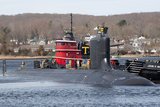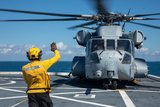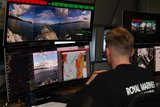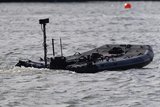IAI and Thales UK offer Sea Serpent for Royal Navy
IAI is working with Thales with the aim to equip UK RN Type 23 frigates with a new kind of missile. (Photo: IAI)
Israel Aerospace Industries (IAI) and Thales UK on 13 April announced a cooperation agreement to offer Sea Serpent anti-ship and anti-surface missiles to the UK RN.
The RN may equip its Type 23 frigates with Sea Serpent in response to the growing intensity of emerging threats.
Sea Serpent provides anti-ship and land capabilities at ranges beyond 200km. Its design is derived from the Gabriel family of surface-to-surface missiles, albeit with significant upgrades.
According to IAI, Sea Serpent can overcome kinetic counter-fire and electronic countermeasures so that the missile can locate and attack its target in any environment.
The missile has been designed for contested and confusing situations, characterised by many decoys and interference. Sea Serpent can adjust its course while in flight, using real-time ISTAR feeds.
The partnership with Thales follows an announcement last year that IAI and ST Engineering were teaming up to market a new anti-ship missile.
This article was updated on 14 April to reflect the fact that a decision is pending on Type 23 missiles.
As part of our promise to deliver comprehensive coverage to our Defence Insight and Premium News subscribers, our curated defence news content provides the latest industry updates, contract awards and programme milestones.
More from Naval Warfare
-
![UK to join US Navy’s Virginia-class submarine assembly effort to speed up construction]()
UK to join US Navy’s Virginia-class submarine assembly effort to speed up construction
The expansion of the Virginia-class submarine construction to UK shores could accelerate the project as US shipbuilders continue to fall short of delivery goals.
-
![US Navy seeks new sensors for the CH-53K King Stallion heavy-lift helicopter]()
US Navy seeks new sensors for the CH-53K King Stallion heavy-lift helicopter
The US Navy intends to publish a draft request for proposals in Q2 2026 and conduct an open competition for the supply of new electro-optical and infrared capabilities for the CH-53K heavy-lift helicopter.
-
![What new technologies could be involved in UK Atlantic Bastion initiative?]()
What new technologies could be involved in UK Atlantic Bastion initiative?
As new details emerge on the UK Royal Navy’s plan to secure the North Atlantic for the UK and NATO, three main areas of opportunity for new technology are the focal point.
-
![NATO naval exercises map out future USV requirements but raise questions on acquisition]()
NATO naval exercises map out future USV requirements but raise questions on acquisition
Uncrewed surface vessels have shifted from a desirable capability to a critical one for navies. But should these systems be bought outright, rented as a service or rapidly built using commercial off-the-shelf components?






















